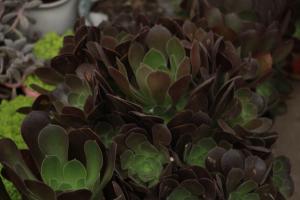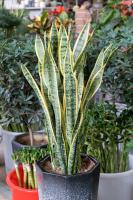Introduction
Spindle tree, also known as Euonymus europaeus, is a small deciduous tree or shrub that is native to Europe and Asia. It is popular for its attractive autumn foliage and showy fruits, which add beauty to any garden or landscape. If you are considering planting a spindle tree, you may be wondering where to plant it. In this article, we will discuss some important factors to consider when selecting the best location for your spindle tree.
Light Requirements
Spindle trees prefer full sun to partial shade. Therefore, it is important to select a location that receives at least six hours of direct sunlight a day. However, in hot climates, spindle trees may benefit from some afternoon shade to protect them from scorching sun rays. Additionally, if you are planting spindle trees in an area that is shaded by other trees, make sure they receive enough sunlight to thrive.
Soil Conditions
Spindle trees prefer well-drained soil that is slightly acidic. They do not like to be planted in soil that is too wet or constantly moist as it may lead to root rot. Therefore, it is important to choose a well-drained location to prevent water from pooling around the root system. In addition, spindle trees grow best in loamy or sandy soil that is rich in organic matter. If you have heavy clay soil, consider amending it with compost or sand to improve water drainage.
Climate Considerations
Spindle trees are hardy trees that can tolerate a wide range of temperatures. However, they thrive in temperate climates with cool winters and mild summers. Therefore, if you live in a region with extreme temperatures or prolonged periods of drought or humidity, you may need to take extra care to ensure your spindle tree survives. Consider providing extra water during dry spells, or protecting young trees from harsh winter winds or frost.
Spacing and Planting
When planting spindle trees, it is important to provide them with enough space to thrive. Spindle trees can grow up to 20 feet tall and 12 feet wide, so make sure to plant them at least 10 feet apart. Additionally, when planting your spindle tree, make sure to dig a hole that is two to three times wider than the root ball, and deep enough to accommodate the entire root system. Plant your spindle tree at the same depth it was planted in the nursery, and make sure to water it in well.
Care and Maintenance
Once your spindle tree is planted, it requires minimal care. However, to ensure it thrives, you should water it regularly during the first year of planting, especially during hot or dry weather. In addition, you may want to fertilize your tree during the spring or fall with a slow-release fertilizer to promote healthy growth. Additionally, to maintain its shape, you may need to prune your spindle tree in early spring before new growth emerges. Finally, look out for any signs of disease or pest infestation, and take immediate action to prevent further damage to your tree.
Conclusion
Planting a spindle tree can add beauty and texture to any garden or landscape. By taking into consideration its light requirements, soil conditions, climate considerations, spacing and planting needs, and care and maintenance, you can ensure your spindle tree thrives for years to come. So go ahead and select the best location for your spindle tree, and enjoy its colorful foliage and showy fruit throughout the seasons!

 how many times do yo...
how many times do yo... how many planted tre...
how many planted tre... how many pine trees ...
how many pine trees ... how many pecan trees...
how many pecan trees... how many plants comp...
how many plants comp... how many plants can ...
how many plants can ... how many plants and ...
how many plants and ... how many pepper plan...
how many pepper plan...





























